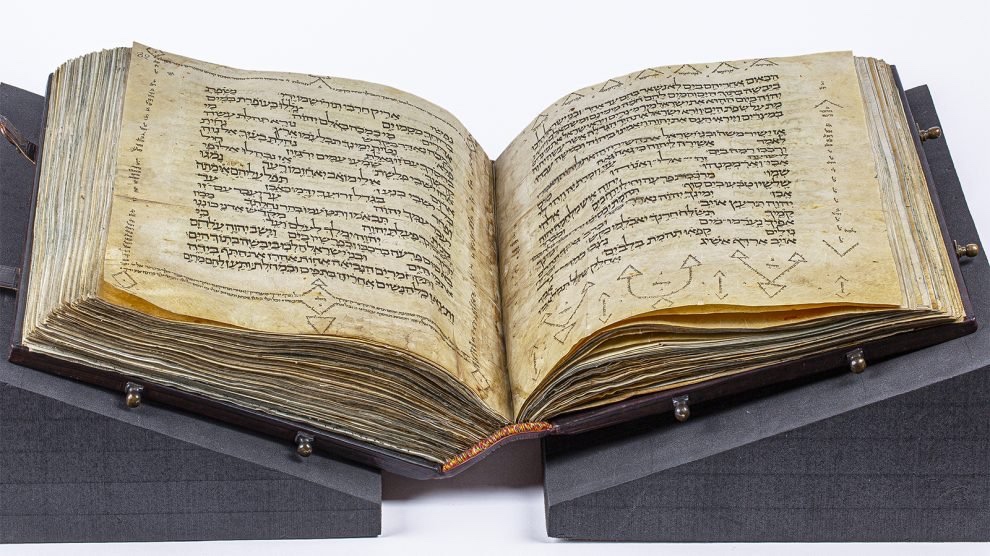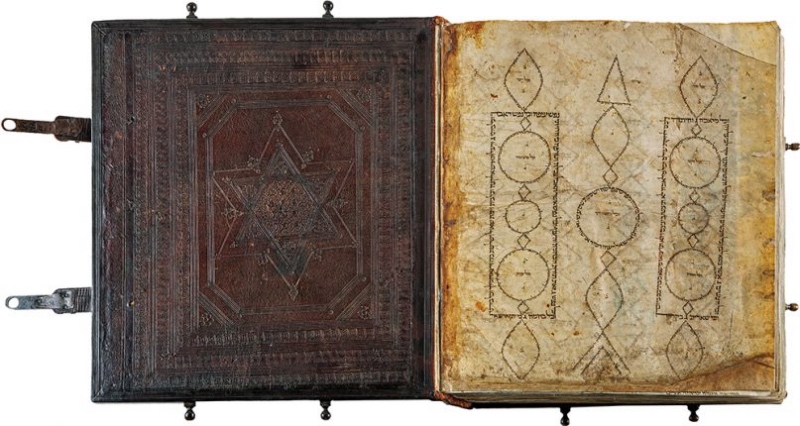A rare medieval Pentateuch manuscript that had been in private collections for years will go on display Friday at the Museum of the Bible.
The volume, which dates to around the year 1000, was acquired two years ago by the Green Collection, headed by billionaire Steve Green of the Hobby Lobby arts and crafts chain.

This Pentateuch was written around the year 1000 and will be displayed at the Museum of the Bible. PICTURE: Alejandro Matos/Museum of the Bible
The Pentateuch, consisting of the five Biblical books of Genesis, Exodus, Leviticus, Numbers and Deuteronomy, forms the first part of the 24 volume Hebrew Bible. It was written by scholars of the Masoretic tradition who codified the Hebrew Bible and added diacritical marks above and below the Hebrew letters to enable correct pronunciation.
Before the appearance of books, Jews read the Pentateuch from the Torah, a scroll made of parchment or animal skins. Torah scrolls are still read in synagogues, but because they do not contain vowels, readers sometimes consult Pentateuch collections such as the one on display at the Museum of the Bible for the authoritative pronunciation.
There are several other extant volumes of the Pentateuch from the 11th century or earlier in Russia and Israel, said Herschel A. Hepler, associate curator at the museum. The Museum of the Bible named this one the Washington Pentateuch.
The 38-by-61-centimetre volume, bound in leather with metal bosses, contains two sections. The main section (nearly 500 pages) was written around the year 1000. Another section (20 pages) was written in 1141 by Joseph ben Jacob in Alexandria, Egypt. This section originally belonged to a different manuscript. Centuries later, it was added to the original manuscript.

The Museum of the Bible named this the Washington Pentateuch. PICTURE: Alejandro Matos/Museum of the Bible
According to the museum, the book made its way to a Karaite Jewish community in the Crimean city of Yevpatoriya. That community gave it as a gift to the archbishop of Kherson (Ukraine) in 1835. Later, it was owned by the Moscow Theological Academy before several Israeli collectors bought it.
The Green Collection acquired it from Israeli financier David Sofer, who lives in London and collects ancient manuscripts. Sofer was recently in the news because he and his partners bought prime Jerusalem land from the Greek Orthodox Church. They had initially intended to build luxury apartments on the site believed by Christians to be the original Hill of Evil Counsel, where, according to the New Testament, the Jewish high priest Caiaphas and his advisers decided to betray Jesus to the Romans. Last year, those plans were withdrawn.
The exhibit at the museum is titled A Fence Around the Torah.





